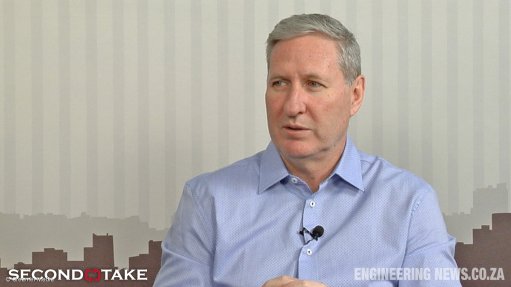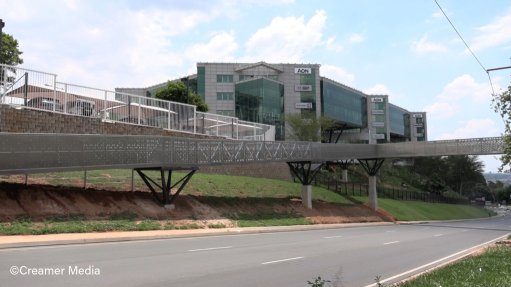Age of Electricity is here, IEA declares as it highlights energy security threats
The International Energy Agency (IEA) has declared that the “Age of Electricity is here” in its latest World Energy Outlook, which again underlines that electricity demand will grow much faster than overall energy use in all three scenarios outlined in the report.
“Last year, we said the world was moving quickly into the Age of Electricity – and it’s clear today that it has already arrived,” executive director Fatih Birol says, highlighting that rising electricity consumption is no longer limited to emerging and developing economies.
“Breakneck demand growth from data centres and AI is helping drive up electricity use in advanced economies, too. Global investment in data centres is expected to reach $580-billion in 2025. Those who say that ‘data is the new oil’ will note that this surpasses the $540-billion being spent on global oil supply – a striking example of the changing nature of modern economies,” Birol notes.
The ‘World Energy Outlook 2025’, the IEA’s flagship yearly report, includes three main scenarios, including a Current Policies Scenario (CPS), a Stated Policies Scenario (STEPS), a Net Zero Emissions by 2050 Scenario (NZE), but concedes that there is less momentum than before behind national and international efforts to reduce emissions, despite rising climate risks.
SURGING ELECTRICITY DEMAND
Electricity, the report affirms, is at the heart of modern economies and electricity demand rises by around 40% to 2035 in both the CPS and the STEPS, and by more than 50% in the NZE scenario.
“For the moment, electricity accounts for only 21% of total final consumption globally, but it is the key source of energy for sectors accounting for over 40% of the global economy and the main source of energy for most households,” the report states.
It adds that demand growth comes in varying proportions from appliances and air conditioners, advanced manufacturing and other light industries, electric mobility, data centres and electrified heating.
Investors are reacting to this trend, with spending on electricity supply and end-use electrification already accounting for half of today’s global energy investment.
To meet demand, renewables grow faster than any other major energy source in all scenarios, led by solar PV, and followed by natural gas and oil, with a revival of fortunes for nuclear energy also indicated.
Renewables face stronger headwinds in the CPS, however, with yearly solar PV additions in the power sector stalling at around today’s levels of 540 GW to 2035.
Under the STEPS, meanwhile, policy changes mean that the US has 30% less renewables capacity installed in 2035 than in the previous IEA outlook, while their rapid expansion continues at the global level.
China remains the largest market for renewables, accounting for 45% to 60% of global deployment over the next ten years across the scenarios, and remains the largest manufacturer of most renewable technologies.
“A pivotal issue for energy security in the Age of Electricity is the speed at which new grids, storage and other sources of power system flexibility are put in place,” the report cautions.
“For the moment, some of these elements are lagging. Investments in electricity generation have charged ahead by almost 70% since 2015, but annual grid spending has risen at less than half that pace.”
DIVERGENT SCENARIOS
Across the broader energy landscape, the scenarios diverge in the ways in which overall energy needs are met, reflected in differing outlooks for oil, natural gas and coal.
In the CPS, demand for oil and natural gas continue to grow to 2050, although coal starts to fall back before the end of the current decade.
In the STEPS, the peak in coal demand is accompanied by a flattening in oil use around 2030. In contrast to the 2024 outlook, gas demand continues growing into the 2030s, owing mainly to changes in US policies and lower gas prices.
However, the report states that broader energy market dynamics will increasingly be shaped by a group of emerging economies, led by India and Southeast Asia and joined by countries in the Middle East, Latin America and Africa.
The IEA also highlights geopolitical risks to energy security, with Birol stating that “there is no other time when energy security tensions have applied to so many fuels and technologies at once – a situation that calls for the same spirit and focus that governments showed when they created the IEA after the 1973 oil shock.”
All the scenarios indicate ample production capacity of solar panels and batteries, as well as global supplies of oil and gas in the near term.
The concentration of panel and battery production in China is described as raising concerns, however. While oil and gas markets remain exposed to geopolitical risks, as well as faster demand growth in response to weaker energy transition policies or lower prices.
CRITICAL CONCENTRATION
The report also flags “serious threats” in relation to critical minerals supply chains, with the key risk described as being the high levels of market concentration.
“A single country [China] is the dominant refiner for 19 out of 20 energy related strategic minerals, with an average market share of around 70%. The minerals in question are vital for power grids, batteries and electric vehicles, but they also play a crucial role in AI chips, jet engines, defence systems and other strategic industries. As of November 2025, more than half of these strategic minerals are subject to some form of export controls.”
Likewise, the report points to the world falling short in meeting its goals in relation to climate change and universal energy access, with around 730-million people still living without electricity, and nearly 2-billion relying on cooking methods that are detrimental to human health.
The report also shows the world surpassing 1.5 °C of warming in any scenario, including those with very rapid emissions reductions.
“The energy sector will need to prepare for the security risks brought by higher temperatures, but there is still scope to avoid the worst climate outcomes. The updated scenario in which the world reaches net zero emissions by mid-century brings temperatures back below 1.5°C in the long term.”
Article Enquiry
Email Article
Save Article
Feedback
To advertise email advertising@creamermedia.co.za or click here
Comments
Press Office
Announcements
What's On
Subscribe to improve your user experience...
Option 1 (equivalent of R125 a month):
Receive a weekly copy of Creamer Media's Engineering News & Mining Weekly magazine
(print copy for those in South Africa and e-magazine for those outside of South Africa)
Receive daily email newsletters
Access to full search results
Access archive of magazine back copies
Access to Projects in Progress
Access to ONE Research Report of your choice in PDF format
Option 2 (equivalent of R375 a month):
All benefits from Option 1
PLUS
Access to Creamer Media's Research Channel Africa for ALL Research Reports, in PDF format, on various industrial and mining sectors
including Electricity; Water; Energy Transition; Hydrogen; Roads, Rail and Ports; Coal; Gold; Platinum; Battery Metals; etc.
Already a subscriber?
Forgotten your password?
Receive weekly copy of Creamer Media's Engineering News & Mining Weekly magazine (print copy for those in South Africa and e-magazine for those outside of South Africa)
➕
Recieve daily email newsletters
➕
Access to full search results
➕
Access archive of magazine back copies
➕
Access to Projects in Progress
➕
Access to ONE Research Report of your choice in PDF format
RESEARCH CHANNEL AFRICA
R4500 (equivalent of R375 a month)
SUBSCRIBEAll benefits from Option 1
➕
Access to Creamer Media's Research Channel Africa for ALL Research Reports on various industrial and mining sectors, in PDF format, including on:
Electricity
➕
Water
➕
Energy Transition
➕
Hydrogen
➕
Roads, Rail and Ports
➕
Coal
➕
Gold
➕
Platinum
➕
Battery Metals
➕
etc.
Receive all benefits from Option 1 or Option 2 delivered to numerous people at your company
➕
Multiple User names and Passwords for simultaneous log-ins
➕
Intranet integration access to all in your organisation

















